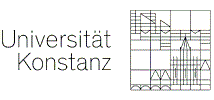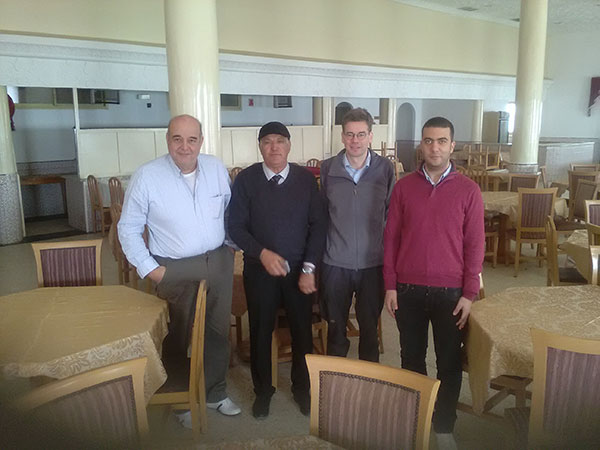



Project Summary
The goal of this project is efficient, cheap, environmental safe production of H2 for small and medium-scale use in remote areas (e.g. small Islands or inaccessible villages) with the use of solar cells based on new perovskite dyes. The H2 is a clean fuel that can cover the majority of energy needs and the existed problems with its storage have been solved. On the other hand the solar cells can produce cheap electrical energy but it has to be consumed immediately because the storage in batteries it’s expensive and unprofitable. For small communities that are not connected with the energy nets the storage of excess energy as H2 to be used later (for production of electricity or another energy needs) it will be the perfect solution.
By using the new types of perovskites we hope to eliminate their disadvantages that are their degradation over time and radiation, as well as their toxicity. To address these issues, we are planning to test perovskites based on metals other than Pb (e.g. Sn, Bi Sb, etc.) and use two-dimensional (2D) perovskite systems [e.g. (C9H19NH3)2SnBr4], nanoparticles of 3D systems, or quasi two-dimensional systems. The design of the perovskites will be based on our previous experience and on theoretical calculations. The prepared perovskites will be fully characterized and tested, in order to choose the most appropriate ones for the development of solar cells
In addition, aspects such as materials used, fabrication and performance testing will be evaluated in order to achieve optimum characteristics and environmental friendliness for use by independent small units (houses, hotels etc).
The main goals of this project, except the fabrication of the specific system, are to build research and development activities between European and Mediterranean Research Institutions and to encourage a strong collaboration for renewable and clean energy fabrication.
Project Information
Project Duration
The project HYDROSOL formally started in 01/06/2016 and it will progress during 36 months.
Funding
GRST - General Secretariat for Research and Technology, Greece.
BMBF - Federal Ministry of Education and Research, Germany.
MESRST - Tunisian Ministry of Higher Education and Scientific Research, Tunisia.
ERANETMED is funded by the European Commission’s 7th Framework Programme
 National Hellenic Research Foundation (NHRF)
National Hellenic Research Foundation (NHRF)
The group of NHRF is a subset of the Materials Synthesis and Physical Chemistry group and consist of:
 University Konstanz ((UKON) Team)
University Konstanz ((UKON) Team)
The group Hybrid Nanostructures lead by Prof. Lukas Schmidt-Mende is focussing its research in the fabrication and characterisation of organic and hybrid solar cells. Currently the group consists of 1 Professor, 10 PhD students, 5 Postdocs and 5 Master students. Of these, 1 postdoc and 4 PhD students currently work specifically on perovskite solar cells. The group has strong expertise in the preparation of metal-oxide nanostructures (nanowires, nanotubes, etc.), the preparation of organic and hybrid solar cells with controlled nanostructure and the investigation of the device physics of these cells including spectroscopic measurements, such as impedance spectroscopy and time resolved photoluminescence with our fs-laser system + Streak-camera. The group is one leading group in respect to solid-state dye-sensitized solar cells.
The group has first experience with perovskite (methylammonium-leadiodide perovskite) solar cells. Currently we are employing our nanostructured electrode materials to such perovskite solar cells and the influence on the device physics.
In this project our contribution will consists of device fabrication and in depth physical characterization of the different perovskite types. We see one focus of our research for this project on the comparison of the different perovskite types and the relation between structure and functionality. For this we will employ standard measurement tools, such as JV characteristics under 1 Sun (AM1.5g) illumination and the measurement of the external quantum efficiency (EQE) to record the important solar parameters such as efficiency, open circuit voltage VOC, short circuit current density JSC and fill factor FF. Impedance spectroscopy, photo-voltage and –current decay (PVD/PCD) and time-resolved photoluminescence measurements will allow us to investigate the role of charge carrier mobility and recombination.
 Ludwig-Maximilian University - Munich (LMUM) team
Ludwig-Maximilian University - Munich (LMUM) team
Photonics and Optoelectronics Group at Faculty of Physics, led by Prof. Jochen Feldmann, is one of the leading groups in time-resolved and single molecule spectroscopy and in functional nanostructures. The group consists of 1 professor, 4 subgroup leaders, 10 postdocs and 14 PhD-students. Dr. Jacek Stolarczyk, one of the 4 subgroup leaders, leads the Photocatalysis and Energy Conversion subgroup. Over the recent years the group has built a strong expertise in photocatalytic solar fuel generation, focusing in particular on semiconductor nanocrystals coupled with metal or metal oxide nanoparticles as photocatalyst materials for water splitting applications. The research of the subgroup is concentrated both of the development of novel nanostructured materials for improvement in the yield of the photocatalytic processes (for example highly efficient nickel based co-catalysts for hydrogen generation) as well as on detailed study of the mechanism of the involved charge separation and transfer and the dynamics of the surface redox processes. By combining the two approaches, the group is in unique position to contribute to the development of water splitting devices in combination with the work of other involved partners.
The group intends to recruit a postdoc or a PhD-student to work on the project.
The Tunisian team lead by Prof. Younes Abid belongs to the laboratory of applied physics of the University of Sfax; It’s composed of two professors, three post doctoral researchers and three PhD students. Our team is known for its expertise in the synthesis and characterization of hybrid materials of perovskite type. During the last decade we were particularly interested in the optical and optoelectronic properties of these materials,. the most interesting results were obtained for the perovskites lead-iodide base as 4Fphenyl ammoniumPbI4 because they have the most intense luminescence associated with very stable excitons, with a binding energy that reaches several hundred of meV, This may explain the intensity of luminescence at room temperature.
Because of the toxicity of lead, we are interested in other low-dimensional hybrid materials with competitive optical properties, such as hybrid-based bismuth halides; cupper halides and tin halides.
In this project, our laboratory has theoretical and experimental contributions.
The experimental contributions: In addition to the synthesis of these materials the contribution of our team in this project is to study the optical properties of the new perovskites themselves and of the devices containing them.
Kickoff meeting on 21-22 February 2017 in the seminar room of the NHRF in Athens - Greece.


Participants
(NHRF)
Dr. George Mousdis, Dr. M. Kandyla, Dr. M. Kompitsas, Georgia Petropoulou (Master Student)
(UKON)
Prof. L. Schmidt-Mende, Dr. A. Fakharuddin
(LMUM)
Dr. J. Stolarczyk
(Univ. Sfax)
Assist. Prof. Haïtham Abid
22-23 February 2018 at the Hotel LIDO La Goulette Tunis - Tunisia

Participants
(NHRF)
Dr. George Mousdis
(UKON)
Prof. L. Schmidt-Mende
(Univ. Sfax)
Younes Abid
H. Barkaoui
Participants
(NHRF)
Dr. George Mousdis, Dr. M. Kompitsas, Anna Ioannou
(UKON)
Prof. L. Schmidt-Mende
(LMUM)
Dr. J. Stolarczyk and some PhD students
(Univ. Sfax)
Prof. Yunes Abid
We are looking for partners and organizations interested in this project and aimed to satisfy the market that could bring the technology to the applied research.
For any inquiry inherent to the project or for a partner collaboration proposal please contact
George A. Mousdis ([email protected]) or
Lukas Schmidt-Mende ([email protected]) or
Younes Abid ([email protected]) or
Jacek Stolarczyk ([email protected])